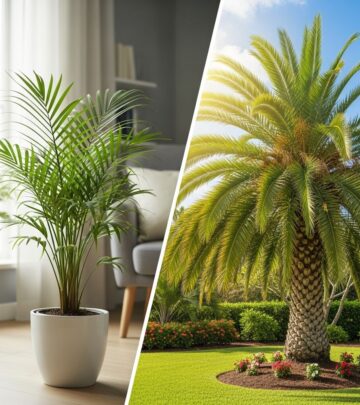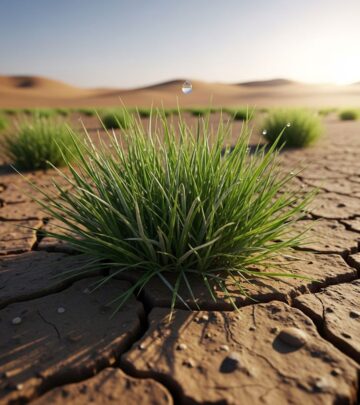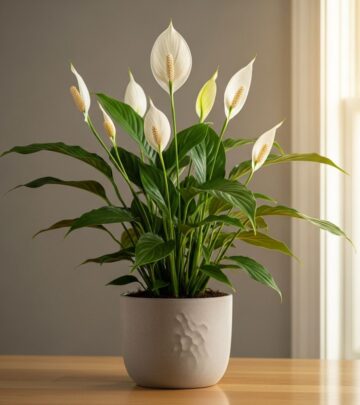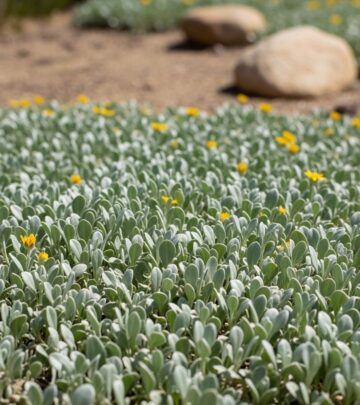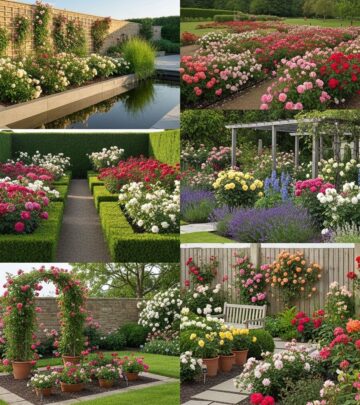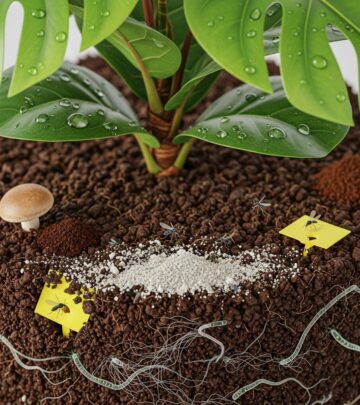Rock Balancing: Expert Tips For Stunning Garden Cairns
Discover the ancient practice of stone stacking and how to create stunning rock cairns in your garden landscape
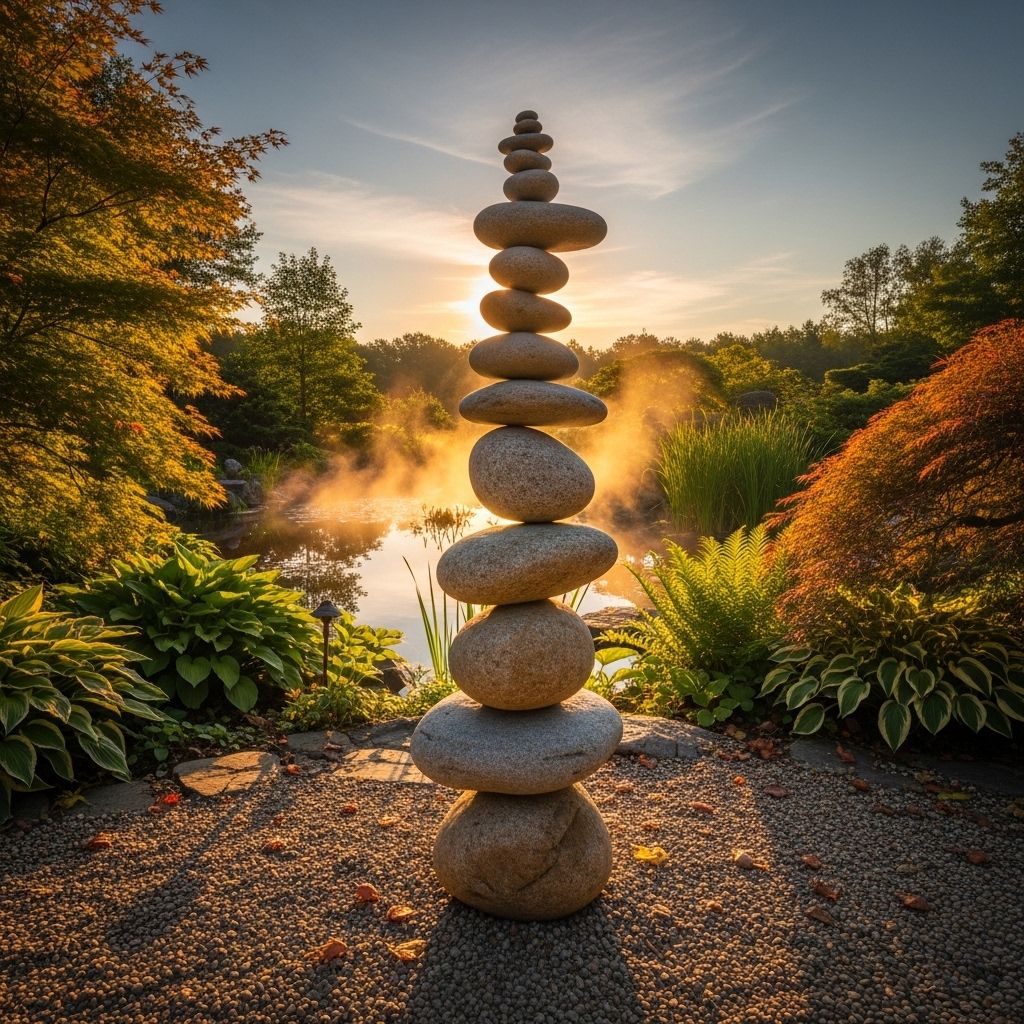
Image: HearthJunction Design Team
The Ancient Art of Rock Balancing
Rock balancing is an ancient practice that combines artistry, patience, and a deep connection with nature. For thousands of years, humans have stacked stones in various formations, creating structures known as cairns. These carefully balanced rock sculptures not only serve as beautiful artistic expressions but also carry rich cultural and spiritual significance across diverse civilizations. From marking trails to commemorating sacred sites, cairns have played vital roles throughout human history.
Today, this tradition continues as both a meditative practice and an art form. Modern rock balancers create stunning, seemingly impossible structures that appear to defy gravity—stones of various shapes and sizes perched precariously one atop another without adhesives or supports. The resulting cairns transform ordinary rocks into extraordinary sculptures that evoke wonder and tranquility in gardens, along waterways, and in natural landscapes.
The History and Significance of Cairns
Cairns have served numerous practical and spiritual purposes throughout history. Ancient cultures used these stone stacks as navigational tools, marking paths through difficult terrain or designating boundaries. In Scotland, the word “cairn” derives from the Gaelic term that refers to a heap of stones built as a memorial or landmark. These stone markers guided travelers across the Highland’s rugged landscapes, often meaning the difference between safe passage and becoming lost in dangerous territory.
Beyond their practical applications, cairns hold deep spiritual significance in many traditions. They’ve been used to mark burial sites, create sacred spaces, and serve as monuments for prayer and reflection. In Buddhist traditions, stone stacking represents balance, harmony, and the impermanence of life. Native American cultures have used cairns to mark ceremonial grounds and astronomical alignments.
Today’s rock balancing artists continue this rich tradition while adding their own contemporary interpretations. Modern cairns symbolize hope, guidance, and connection to nature. They evoke a sense of history while creating moments of beauty and contemplation in our fast-paced world.
The Zen of Rock Balancing
The practice of rock balancing has strong connections to Zen philosophy, which emphasizes mindfulness, presence, and harmonious connection with nature. Creating a balanced rock sculpture requires complete focus and attention to the present moment—the subtle textures of each stone, the gentle pull of gravity, and the precise point where balance can be achieved.
For many practitioners, rock balancing is a form of moving meditation. The careful placement of each stone demands patience and persistence. Finding the perfect balance point requires letting go of preconceptions and tuning into what the stones themselves seem to “want.” As rock balancing artist Michael Grab explains, “The process of finding balance requires a tremendous amount of patience and presence.”
This meditative quality makes rock balancing particularly valuable in today’s distraction-filled world. The practice offers an opportunity to slow down, connect with natural materials, and experience the satisfaction of creating something beautiful through patience and persistence. Many find that the focused attention required for balancing rocks provides a welcome respite from digital devices and constant stimulation.
Masters of Stone: Notable Rock Balancing Artists
Several contemporary artists have elevated rock balancing to new heights, creating astonishing works that showcase the possibilities of this ancient practice. Michael Grab, who has been balancing rocks since 2008, builds his sculptures with stones found in natural landscapes, typically alongside water. His gravity-defying creations appear almost magical, with large rocks balanced impossibly on tiny points.
Artist Andy Goldsworthy is renowned for his nature-based installations, including intricate cairns and arches made from carefully balanced stones. His work emphasizes the beauty and impermanence of natural art, often documenting his creations through photography before they naturally collapse or erode.
Peter Riedel, known for his “floating stone” installations, creates cairns that seem to defy physics, with heavy stones balanced on impossibly small contact points. His work demonstrates how rock balancing can transform ordinary stones into extraordinary artistic expressions.
These artists and others have helped bring rock balancing into contemporary art conversations while maintaining connections to the practice’s ancient roots. Their work inspires both professional artists and hobbyists to explore this meditative craft.
Creating Your Own Garden Cairns
Adding cairns to your garden or landscape creates focal points of tranquility and artistic expression. Whether you’re interested in traditional stacked cairns or more elaborate balanced sculptures, the process begins with selecting the right location and gathering suitable stones.
Selecting a Location
Choose a spot where your cairn will be visible and enhance its surroundings. Consider places where you naturally pause in the garden—beside a path, near a seating area, or as a focal point visible from a window. Garden cairns work beautifully in Japanese-inspired gardens, woodland settings, or alongside water features. The location should feel natural and provide a stable foundation for your creation.
Gathering Materials
The beauty of rock balancing lies in working with natural materials. Collect stones with interesting shapes, colors, and textures. Flat stones work well for traditional stacked cairns, while more irregular shapes create interesting challenges for balance-focused sculptures. Consider gathering stones from your own property or purchasing them from landscape supply centers. If collecting stones from natural areas, always respect local regulations and environmental considerations.
Aim for a variety of sizes to create visual interest in your cairn. Having stones with different characteristics gives you more options as you build. Look for stones with:
- Interesting textures and patterns
- Contrasting colors
- Various shapes (round, flat, angular)
- Different sizes for building from larger bases to smaller crowning stones
Techniques for Building Rock Cairns
There are several approaches to creating rock cairns, from simple stacking to complex balancing techniques that create seemingly impossible formations.
Traditional Stacked Cairns
The simplest approach involves stacking rocks with relatively flat surfaces. Begin with larger, stable stones at the base and gradually work toward smaller stones at the top. Each stone should contact the one below it at multiple points for stability.
To create a traditional stacked cairn:
- Clear and level the ground where you’ll build your cairn
- Place your largest, flattest stones as a solid foundation
- Stack progressively smaller stones, ensuring each layer is stable before adding the next
- Create either a conical shape (wider at bottom, narrower at top) or a more columnar structure
- Crown your cairn with a distinctive stone that complements the overall composition
Balance-Focused Cairns
More advanced rock balancing involves finding precise balance points where stones connect at minimal contact points. This technique creates dramatic, gravity-defying sculptures where rocks appear to float or balance impossibly.
For balance-focused cairns:
- Begin with a stable base stone
- Find the center of gravity for each stone you add
- Use your fingertips to sense vibrations and find the exact balance point
- Move slowly and make tiny adjustments
- Practice patience—finding perfect balance may require multiple attempts
- Once balanced, carefully remove your hands to test stability
Supported Cairns for Permanence
For garden cairns intended to last through seasons and weather, consider creating supported structures. These use concealed supports while maintaining the aesthetic appeal of traditional cairns.
To create a supported garden cairn:
- Insert a rebar stake into the ground at your chosen location (at least 12 inches deep)
- Create stones with embedded PVC pipe channels using hypertufa or concrete mix
- Allow the stones to cure completely
- Slide the prepared stones onto the rebar stake
- Arrange the stones in an aesthetically pleasing composition
This method creates durable garden sculptures that withstand wind and weather while providing support for climbing plants like clematis or ivy.
The Spiritual Dimension of Rock Balancing
Beyond their artistic appeal, cairns often carry spiritual significance for their creators and viewers. The process of finding balance between stones mirrors the search for equilibrium in life. Many practitioners describe the activity as meditative, fostering mindfulness and connection.
Creating cairns can serve as a form of nature-based spiritual practice. The focus required to balance stones demands present-moment awareness—a core principle in many contemplative traditions. The temporary nature of balanced stone sculptures (which may fall with the next breeze) reminds us of life’s impermanence and the beauty of creating something knowing it won’t last forever.
In garden settings, cairns can designate spaces for reflection or meditation. They serve as visual anchors that invite contemplation and provide focal points for mindfulness practice. Many find that the simple presence of these balanced stones creates a sense of tranquility and spiritual connection in their outdoor spaces.
Incorporating Cairns into Garden Design
Garden cairns offer versatile design elements that complement various landscape styles. They can serve as focal points, mark transitions between garden areas, or create visual interest in otherwise sparse spaces.
Design Considerations
When incorporating cairns into your garden design, consider how they’ll interact with surrounding elements. Position cairns where they’ll be visible from main viewing areas and where their presence enhances the overall garden experience. Think about:
- Scale and proportion relative to surrounding plants and features
- Contrast and harmony with existing textures and colors
- Sight lines and viewing angles
- Seasonal changes that might affect visibility or impact
Complementary Plantings
Choose plants that enhance your cairn without overwhelming it. Low-growing ground covers like creeping thyme or moss create natural-looking bases. Ornamental grasses provide movement and contrast to the stones’ solidity. For Japanese-inspired gardens, consider plants like Japanese forest grass, dwarf conifers, or small-leaved shrubs that complement the cairns’ meditative quality.
Maintaining Your Garden Cairns
Garden cairns require minimal maintenance but benefit from occasional attention. Traditionally balanced cairns may shift or fall with weather changes or ground movement. Accept this impermanence as part of their charm, or gently restack them as needed.
For permanent supported cairns, check stability seasonally and after severe weather. Clear debris or plant material that might accumulate between stones. Over time, natural weathering will enhance the appearance of your cairns, adding patina and character to the stones.
Frequently Asked Questions (FAQs)
Q: Is rock balancing harmful to natural environments?
A: When practiced responsibly, rock balancing can be environmentally sound. However, in natural areas, particularly stream beds or protected environments, moving rocks can disrupt habitats and ecosystems. Always follow local regulations, practice Leave No Trace principles in wild areas, and consider creating permanent cairns only in your own garden.
Q: How long does it take to learn rock balancing?
A: Basic stacking techniques can be learned quickly, but developing the sensitivity for creating complex balanced structures takes practice. Most beginners can create simple cairns immediately, while advanced balancing may require weeks or months of regular practice to develop the necessary touch and patience.
Q: Will my garden cairn withstand weather and seasons?
A: Traditionally balanced cairns may collapse during strong winds, heavy rain, or when animals interact with them. For more permanent garden features, consider using the supported cairn technique with embedded rebar, or create lower, more stable structures with wider bases and more contact points between stones.
Q: What types of stones work best for rock balancing?
A: Various stones can work for balancing, but those with flat sides, interesting textures, and contrasting colors often create the most visually appealing cairns. River rocks, slate, limestone, and sandstone are popular choices. The key is finding stones with surfaces that can connect at precise balance points.
By incorporating rock cairns into your garden landscape, you connect with an ancient tradition while creating spaces for contemplation, artistic expression, and natural beauty. Whether you choose simple stacked structures or attempt gravity-defying balanced compositions, the practice offers both aesthetic and spiritual rewards that enhance any garden setting.
References
- https://buddhagroove.com/collections/zen-rocks-cairn-sculptures
- https://www.gardendesign.com/art/rock-cairn-sculptures.html
- https://ca.pinterest.com/juckjane/cairns/
- https://www.gardeningknowhow.com/special/spaces/rock-cairns-in-gardens.htm
- http://fromthesummersgarden.blogspot.com/2018/03/sculpt-yoiur-own-garden-cairn.html
Read full bio of Srija Burman




